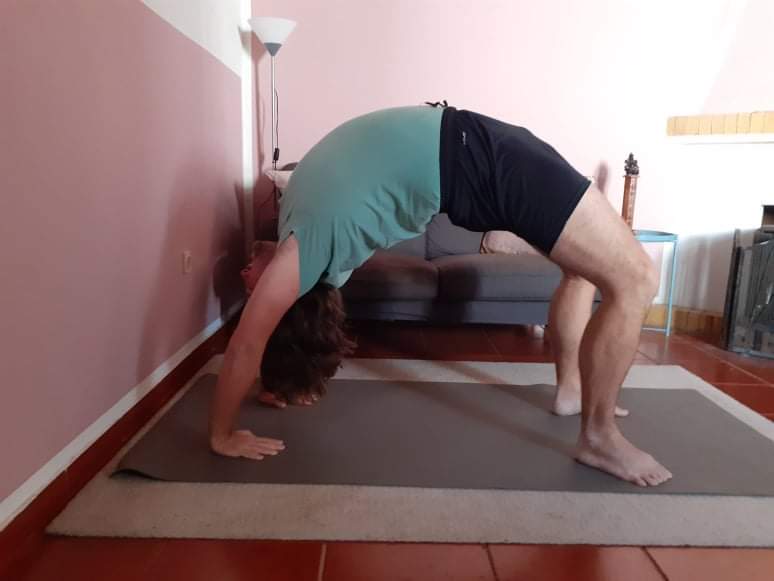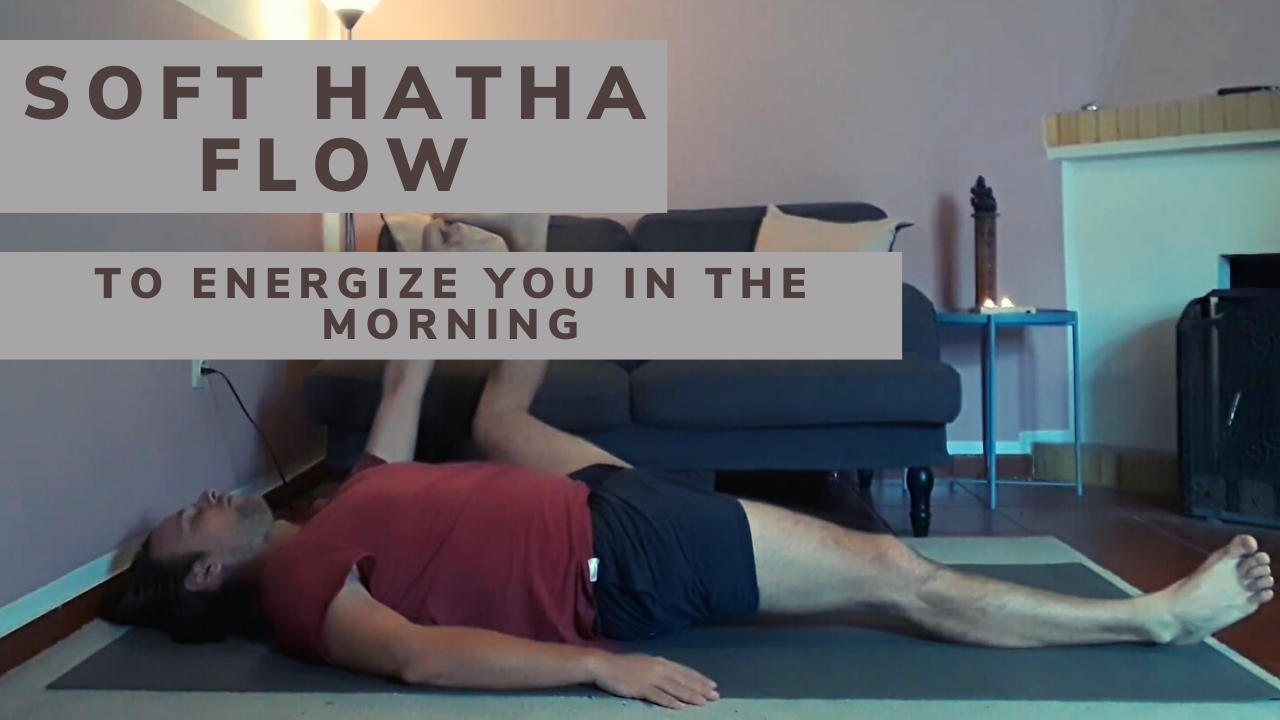Yoga Nidra, or also known as yogic sleep. It is said that 45 minutes of doing yoga Nidra is equal to 3 hours of actual sleep. Of course, we have to take a closer look at that to make sure that you’re not going to substitute doing yoga Nidra with sleeping at night. In this article, we’ll talk a bit about this meditation, and you’ll even find a recording to experience it yourself. And as a free gift to you, I’m sharing the excerpt of this yoga Nidra as well. This will make that you can guide this meditation yourself!
Yoga Nidra As a Substitute For Sleep?

Let’s first begin with this little thing. I’ve mentioned before that 45 minutes of Yoga Nidra is equal to 3 hours of sleep. Does this mean that you can give up your sleep if you do a daily meditation? Well, shortly said, no.
With Yoga Nidra, you’ll go into a soft trance, which equals going into the non-REM sleep. This means that you do go into the cycle of sleep, without actually being asleep. However, this is only part of the cycle and you’ll also need that REM-sleep (go into dreamland) to get a full night rest.
Then why do they say that yoga Nidra has the same benefits as sleep? Well, it also does in some kind of way. By regularly practicing Yoga Nidra, you’ll be able to sleep deeper. Not only that but because you’ll be in such a deep state of relaxation, your body and mind get the time to completely rest up. It’s like taking a nap, but better.
Another thing is that if you do Yoga Nidra right before you go to bed, you’ll actually get a deeper sleep. As you’re already in the non-REM sleep, you can already go to dreamland right after finishing the meditation.
So, let’s try it out with the next free Yoga Nidra:
Yoga Nidra Guided Meditation

So, I have made this recording of a free Yoga Nidra that I actually did a lot while I was having an anxiety disorder. This Yoga Nidra was extremely helpful to me as I was incorporating my body into relaxation. Often during meditation, you kind of forget about the body and it’s more about the clear your mind part. Which is why Yoga Nidra came in handy.
For this free guided Yoga Nidra, I’ve made sure that you have to do something with the muscles of your body, so it’s quite important that when you are lying down that you can’t feel any obstruction. You have to do a little bit of movement and if you can’t do that, well, then this Yoga Nidra is not going to have its full effect.
By incorporating some movement into this meditation I made sure that you get the chance to release all the tension that you have built up into your body. When you’re under a lot of stress or even when you are experiencing symptoms of anxiety, this Yoga Nidra might be a great aid. Relax the body and watch the next video:
Guided Yoga Nidra Script
If you’ve got a spouse or friends around you that can use this meditation as well. I’m also offering this free meditation script just for you. This includes Yoga Teachers and Meditation Facilitators as well of course.
Yoga Nidra For Anxiety (Script)
Hi there and welcome to this yoga Nidra for anxiety. Within this meditation that will last about half an hour, we will incorporate the body a bit. This will make sure that we loosen all the tension that our body has built up during the past days, weeks or even months.
To begin, make sure that you can’t be disturbed. Turn your phone on airplane mode and be sure that you’re not going to be interrupted during the next 30 minutes.
When you are ready, go and lie on your back. You can do this exercise in bed, on your sofa or a yoga mat. Make sure that you cover yourself with a blanket or that the room temperature is warm enough. When you lie down for a while, your body will cool down significantly.
Now, we will begin with our meditation. Close down your eyes. Start listening to all the sounds around you. Widen your hearing. Listen to the noises outside of the room. Maybe you can hear some cars or birds. Or even pedestrians on the sidewalk. Listen to them without making a judgment. Just observe all the sounds. Don’t put any label on them. They’re just there.
Next, bring your attention closer to you. Keep your awareness in the room now. Listen to the sounds in the room. Maybe you can hear a clock ticking, maybe the sound of the radiator. It can be anything. Or nothing at all. Don’t force anything, let it just be. Again, try not to label the things you are hearing. You are just observing, and nothing more.
Finally, bring your attention to yourself. Listen to your breathing, listen to your heartbeat. Listen to all subtle movements that your body is making at this moment. Again, make sure that there are no labels. Your breathing is how it should be at this moment, the beat of your heart is how it is right now.
And then, we are going to actively use the breath while we will focus on all body parts. Deepen your breath a bit, make it active. But again, don’t force anything. Your breathing should be deep, but you shouldn’t feel any strain.
Let’s start with the full active body scan.
First, bring your attention to your toes. When you inhale activate all the muscles in your toes. And exhale, release that tension again. (X3)
Bring your attention to your feet. When you inhale activate all the muscles in your feet. And exhale, release that tension again. (X3)
Bring your attention to your legs. When you inhale activate all the muscles in your legs. And exhale, release that tension again. (X3)
Bring your attention to your buttocks. When you inhale activate all the muscles in your buttocks. And exhale, release that tension again. (X3)
Bring your attention to your abdomen. When you inhale activate all the muscles in your abdomen. And exhale, release that tension again. (X3)
Bring your attention to your chest and shoulders. When you inhale activate all the muscles in your chest and shoulders. And exhale, release that tension again. (X3)
Bring your attention to your arms. When you inhale activate all the muscles in your arms. And exhale, release that tension again. (X3)
Bring your attention to your hands and fingers. When you inhale activate all the muscles in your hands and fingers. And exhale, release that tension again. (X3)
Bring your attention to your face. When you inhale, activate all the muscles in your face. Squeeze those muscles as good as you can. You’ll make a very funny face now, but that’s alright, you are alone and no one can see you. Make the funniest face that you’ve ever seen. (X3)
And now, for the final step. Activate all the muscles in your body, from toe till head on an inhalation. Tighten them as firmly as you can and release again on an exhalation. (X3)
Bring your awareness back to your body. See if anything has changed. Are you breathing differently now? Or do you feel some changes in your muscles and bones? Just observe them. And then let go of that image.
Your awareness widens again, keeping it in the room. You hear those sounds again that you were hearing before. Gently you are coming back to this world.
Take your time. When you are ready, you can open your eyes again. If you did this exercise before going to sleep, you might want to put yourself in a position that suits your needs at this moment and slowly drift off.
If you are continuing your day. Make sure that you have at least half an hour that you can relax. As if you are just waking up.
If you’d like, you can print the script, right here.
Conclusion

That’s it for now, I hope you liked this amazing relaxing yoga Nidra and please do share it with others. If you’ve done this one yourself already, please let me know how you experienced this meditation. And if you are ready to go to bed after doing the Yoga Nidra, I wish you a good night’s sleep ;).
Nama-stay wonderful everyone!
Other articles you might like:




I must admit that I have not heard much about Yoga Nidra, so I am very glad to have come across your post here as 45 minutes being equal to 3 hours of sleep sounds pretty outstanding. I know some people who are affected by a touch of insomnia and also anxiety, so I will definitely refer them to your post here. With Yoga Nidra I like how the mind targets different body parts and focuses on them, and I appreciate the video you’ve made as I feel it will be a great help, well done!
Thanks for sharing! And I sure hope it could be of any help!
Wow! Thank you very much for this very useful article for me. During this time, I did experience difficulty sleeping due to anxiety. Even the doctor sentenced me to have moderate to high depression which required me to take medication every night so I could fall asleep.
And because of that, I will try for your recommendation about this Yoga Nidra. This is because after hearing your video, I feel more relaxed.
However, in your opinion, do I still need to take sleeping pills if I try to do this? And how long is the maximum limit to do this? (what I mean is, if I don’t sleep and keep doing this yoga)
Hi Kylie, as I mentioned in my article, it doesn’t substitute sleeping at all. It does help with falling asleep if you do it right before you go to bed, but it’s not at all a replacement for sleep. They say that it’s as if you have slept for 45 minutes because of the effect on body and mind, but your brain needs a rest as well. If I were you I would stay on the pills, for now, start doing a yoga Nidra every evening before you go to bed, and if you feel that it’s working, go back to your doctor to ask for a lower dosage. Never stop taking pills without any medical advice as there may be contraindications.
Because of my daily stressful work, I was looking for a way to relax, and I know that Yoga has special techniques for relaxing the mind and body. That’s how I came across your article on Yoga Nidra.
I first heard about this type of yoga, and I didn’t know that practicing Yoga Nidra could actually be equal to 3 hours of sleep. That’s exactly what I was looking for.
Yoga Nidra is really amazing and does provide an amazing relaxation!